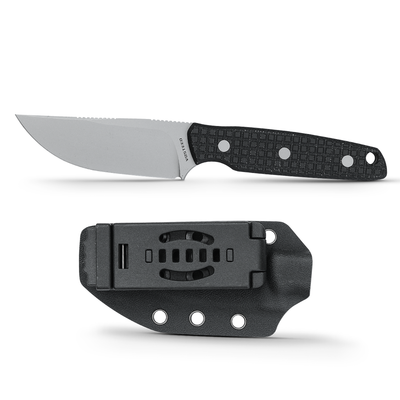Unleash Your Survival Instincts: Discover the Hidden Power of Fixed Blade Bushcraft Knives!
Bushcraft is more than just a hobby; it is a way of connecting with nature and honing skills that have been passed down for generations. At the heart of bushcraft lies the fixed blade bushcraft knife, a tool that has become synonymous with outdoor survival and self-sufficiency. As interest in outdoor activities such as camping, hiking, and survival training continues to grow, understanding the tools that enhance these experiences is paramount. Among these, the fixed blade bushcraft knife stands out due to its reliability and versatility. This article delves into the features, uses, and benefits of fixed blade bushcraft knives, guiding you through their essential role in the wilderness.

Understanding Fixed Blade Bushcraft Knives
A fixed blade bushcraft knife is designed for outdoor tasks and survival situations. Unlike folding knives, which can easily break or malfunction under stress, fixed blade knives are constructed as a single piece, offering superior strength and durability. The blade is typically longer and sturdier, allowing for more demanding tasks such as chopping and batoning. Materials for bushcraft knives often include high-carbon steel, which retains its edge well and is easier to sharpen in the field. The design of the blade often features a full tang, meaning the blade extends through the handle, providing balance and control, essential for effective use in rugged environments. This construction ensures the knife can withstand the rigors of bushcraft activities, making it an indispensable tool for outdoor enthusiasts.
Key Features of Fixed Blade Bushcraft Knives
Several key features make fixed blade bushcraft knives ideal for outdoor use. Blade length typically ranges from 4 to 10 inches, striking a balance between control and cutting power. A thicker blade enhances durability, allowing it to withstand heavy use without bending or breaking. Ergonomically designed handles offer a comfortable grip, which is crucial when performing repetitive tasks. The tang design is also significant; a full tang provides stability and strength, while a partial tang may compromise the knife's integrity during rigorous use. Additionally, many bushcraft knives feature a non-reflective finish to reduce visibility in the wild, and some come with textured handles for improved grip in wet conditions. Together, these features contribute to the knife's performance, ensuring it can handle various outdoor challenges.
Uses of Fixed Blade Bushcraft Knives
The applications of fixed blade bushcraft knives are vast and varied. In survival scenarios, these knives can be used for food preparation, such as skinning and filleting game or chopping vegetables. They are also indispensable when it comes to building shelter; a sturdy knife can help gather materials and create structures. Fire starting is another critical use—whether you need to carve kindling or create a bow drill, a bushcraft knife is an essential tool. Personal experiences from friends who have ventured into the wild highlight the knife's versatility; one friend shared how they used their fixed blade knife to create a makeshift fishing spear, enabling them to catch dinner on a camping trip. Additionally, crafting tools, such as making a walking staff or creating traps, showcases the knife's adaptability, proving that a well-made fixed blade can be a survivalist's best friend.
Benefits of Using Fixed Blade Bushcraft Knives
The advantages of fixed blade knives over folding knives in bushcraft situations are significant. Firstly, the reliability of a fixed blade cannot be overstated; there are no moving parts that could fail when you need the knife the most. This reliability translates into confidence during critical tasks. The strength of fixed blade knives allows them to perform heavy-duty tasks without fear of bending or breaking, which is a common concern with folding knives. Furthermore, maintenance is simpler; fixed blade knives are easier to clean and sharpen in the field, which is essential when you are far from civilization. Safety is also enhanced, as a fixed blade knife does not accidentally fold during use, reducing the risk of injury. For anyone serious about bushcraft, these benefits make fixed blade knives a superior choice.
Essential Insights on Fixed Blade Bushcraft Knives
In summary, fixed blade bushcraft knives are essential tools for anyone looking to explore the great outdoors with confidence. Understanding their features, uses, and benefits empowers outdoor enthusiasts to make informed choices about their gear. Whether you're preparing a meal, building a shelter, or crafting tools, a fixed blade bushcraft knife is a reliable companion that can enhance your survival skills. As you embark on your bushcraft adventures, remember to choose your tools wisely and embrace the skills that will help you thrive in nature.







